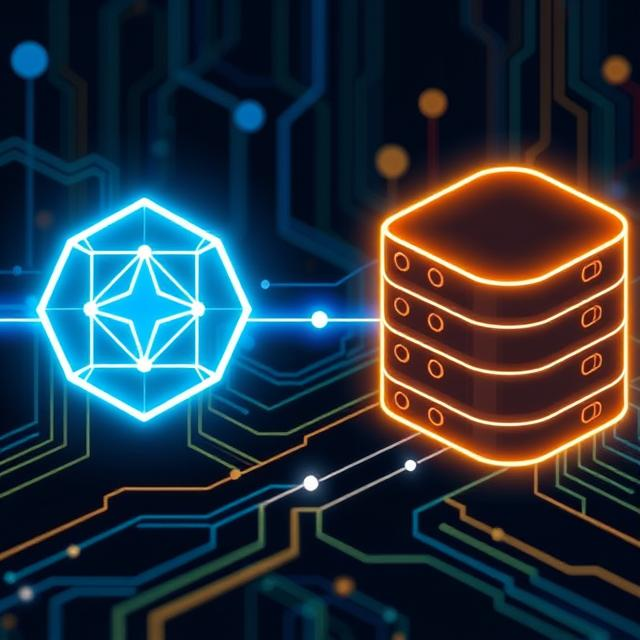Blockchain vs. Traditional Databases: Key Differences Explained
Blockchain technology and traditional databases serve as robust tools to manage data, but they work in very different ways. Knowing these differences can help you pick the right one for a specific job or project. Let’s break down the main differences between blockchain and traditional databases in a clear and simple way.
1. Centralized vs. Decentralized
The main difference between blockchain and traditional databases lies in how they’re set up and controlled.
- Traditional Databases: These have a centralized structure. This means all information sits in one place under the control of a single entity or company. This setup makes management simpler, but it also gives one party total control over the information.
- Blockchain: On the flip side, blockchain has a decentralized setup. Information spreads across many computers (called nodes), and no one entity runs the system. Everyone in the network has a copy of the information, which boosts transparency and security.
Key Points:
- Traditional databases: Centralized control.
- Blockchain: Decentralized with information shared across many computers.
2. Data Security and Immutability
Blockchain’s security features stand out as one of its main strengths.
- Traditional Databases: Traditional databases allow users to change or delete data . This flexibility has its advantages, but it also brings security concerns. People might mess with or change data without much supervision.
- Blockchain: Blockchain stands out for its safety and unchangeable nature. Data added to the blockchain stays put – you can’t change or remove it. This approach makes sure the data remains correct and safe from tampering. Blockchain uses code scrambling and a group decision process where everyone agrees on the data before it joins the system.
Key Points:
- Traditional databases: You can edit or delete data, which might create security problems.
- Blockchain: Once you add data, you can’t change it making it secure and unchangeable.
3. Transparency and Traceability
Blockchain shines when it comes to transparency.
- Traditional Databases: , these databases are private. people with permission can see the data, and it’s often hard to track changes without the right access.
- Blockchain: Blockchain lets everyone see everything. It records every transaction on a public list that anyone in the network can look at. This makes it easy to follow the history of any data or transaction, which adds more accountability.
Key Points:
- Regular databases: Private, with little openness.
- Blockchain: Open letting everyone see and track transactions.
4. Data Management: Changing vs. Adding
Regular databases and blockchain handle data .
- Regular Databases: These let you make, read, change, and remove data (called CRUD actions). This gives you room to make changes when you need to.
- Blockchain: This system adds data. Once it’s recorded, you can’t change or delete it. Instead new info goes into a new block keeping a clear and full history of all changes.
Main Points:
- Regular databases: Let you create, read, update, and delete data.
- Blockchain: Only allows you to add new data, never change what’s there.
5. Speed and Performance
How fast and well a system works plays a big role in picking between blockchain and regular databases.
- Regular Databases: These are quicker for big applications. They don’t need the complex checking that blockchain does.
- Blockchain: This can be slower because it’s spread out. Every transaction needs checking by many computers, which takes time in bigger networks.
Main Points:
- Traditional databases: Quicker and more productive for big operations.
- Blockchain: Slower, because it needs many checks.
6. Cost and Maintenance
Cost and upkeep matter when picking between blockchain and regular databases.
- Traditional Databases: Normal databases cost less to set up and maintain. They’re easier to handle because they’re in one place. But they might need extra money for safety and backups.
- Blockchain: Blockchain systems can cost more for power use (in proof-of-work blockchains) and keeping a spread-out network running. But blockchain can cut costs in some areas, like getting rid of middlemen in money moves.
Key Points:
- Regular databases: They’re cheaper to keep running but might need more money spent on keeping them safe.
- Blockchain: It costs more for power and upkeep, but it can save money in other ways.
